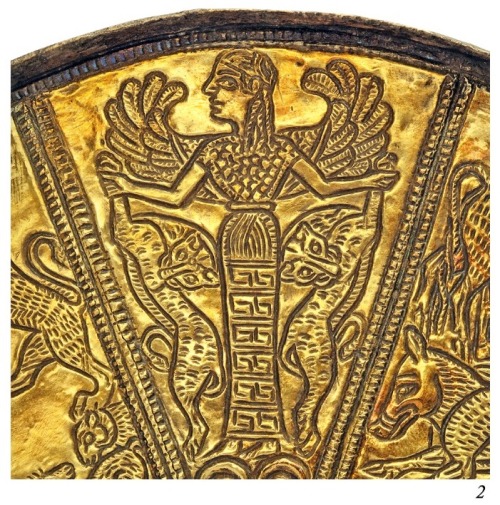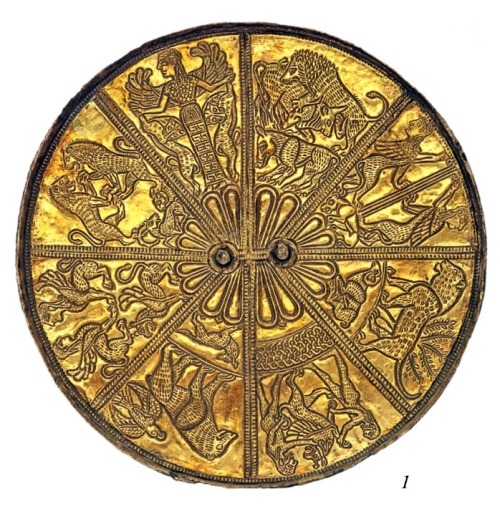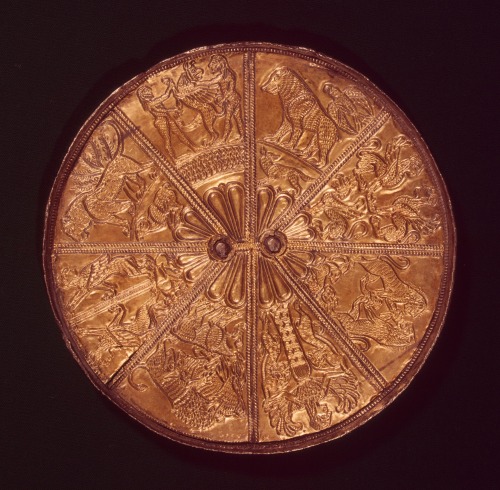“Take My Heart And Hurl Its Fragments To The Moon, The Trees, The Beasts, In The Air, The Dark, The
“Take my heart and hurl its fragments to the moon, the trees, the beasts, in the air, the dark, the waters, so that nothing returns to me ever again.”
— Anna de Noailles, tr. by Jean Morris, from Poems; “Ariadne’s Lament,”
More Posts from Ro0hafz4 and Others
AND IF we’re talking about Ovid’s take on the Persephone myth anyway, and the other story Ovid inserted, the comparison between the boy being turned into a lizard for laughing at Demeter and the Demophon myth are so different in every single aspect that I cannot fathom what the use of the second one is to the Persephone myth, only to Ovid’s overall themes. While Demophon is a temporary stand-in for Persephone and perhaps even a tool Demeter uses to one-up her brothers, and is a cultic display of her matronly side as a goddess, the lizard tale just…provides comedy? Characterizes her as petty or fickle? It really is the most derailing story line in this part of the text, as Demeter is searching before it and after it. It only provides the mandatory metamorphosis, but so does Cyane? And the fun part is that the episode reflects the Homeric hymn in that Demeter is received as a guest and receives a specific type of food tied to her role as goddess of the grain, but here it has absolutely no payoff, nor any ambiguity to make us guess at more. It just…is.



Mirror with Scythian mistress of the animals, Griffins, Sphinxes, animals, and Arimaspians 7th C. BCE. This may have association with the Scythian deity Artimpasa, as she could be associated with animals, though the Potnia Theron figure has usually been associated with Artemis, from what I've seen. From the Kelermess Barrow. Hermitage Museum.
"Among these, the Tauri have the following customs; all ship-wrecked men, and any Greeks whom they take in their sea‑raiding, they sacrifice to the Virgin Goddess (Artemis) as I will show: after the first rites of sacrifice, they smite the victim on the head with a club; according to some, they then throw down the body from the cliff whereon their temple stands, and impale the head; others agree with this as to the head, but say that the body is buried, not thrown down from the cliff. This deity to whom they sacrifice is said by the Tauri themselves to be Agamemnon's daughter Iphigenia. As for the enemies whom they overcome, each man cuts off his enemy's head and carries it away to his house, where he impales it on a tall pole and sets it standing high above the dwelling, above the smoke-vent for the most part. These heads, they say, are set aloft to guard the whole house. The Tauri live by plundering and war."
-Herodotus, The Histories, Book 4.103
As I am reading an aggregation notebook about fairytales, I am reminded of another reason for why there is this change from “folklorist” to “literary” studies of fairytales recently.
As you might know, the “folkloric” studies of fairytales led to typification, classification, catalogues - the famous Aarne-Thompson classification. We identified the “families” of fairytales, the common points they shared, the ingredients of the recipes, the pieces of the puzzle placed together ; we’ve got lists of archetypal characters and the typical scenarios and routines. And don’t get me wrong, this is really good and cool - through this we were able to identify the “untold rules” of fairytales, and the unofficial canons of the genre, and better highlight the unusual or brilliant variations…
But there is a slight problem with those studies. Their “break-down” method might start out or end as a catalogue, but it passes by a system of “molds”, if I dare say so. Basically, to forge types, to classify, to make lists and divided categories, they enforce the stories into a mold, into general archetypes, into “typical behaviors”… And this is where people see things differently nowadays.
The example I can bring forward is how the folklorist studies usually consider an archetype of the story to be the “aggressor”. You know, the typical fairytale villain. And this folklorist approach will often end up basing their categorization on “What does the aggressor does? How does the hero encounters the aggressor? Is the aggressor killed or robbed?”. But who is the aggressor? Anyone and nobody. In the “aggressor” position, they treat the very same way dragons and evil stepmothers, ogres and wicked fairies, witches and lustful kings, greedy knights and devious dwarves. These are all just “costumes”, for some folklorist, placed on an archetypal “fairytale aggressor”, and these “costumes” are just ornaments that are only a secondary, if not tertiary matter.
But… what the “literary studies” are bringing forth nowadays is the question: “Wait… Maybe it does matter. Maybe who or what the aggressor is does matter. Maybe we shouldn’t treat the same way stories that are about dragons and those about evil witches. Maybe there is a reason why the storyteller prefers to talk about a greedy abusive mother rather than an ogre deep in the woods. And the literary studies precisely ask those questions because - unlike the folklorist studies which mostly see fairytales as ancestral plans and outlines, traditional schemas and structure, cultural frameworks and fabrics, the literary studies try to consider the fairytales more as stories first. Stories told by a certain person, in front of a certain audience, crafted a certain way for a certain time and era.
This is why, while the folklorist studies tend to discard or disregard the “little details” as not so important (because they are searching for the bone structure or “primordial core” of the story), the literary studies rather focus on these details - because it is those details that make the story. The little twists and turns that each storyteller adds to the formula, the specific additions of a man or woman’s own mind and culture. For a folklorist study, it doesn’t matter if the key is made out of gold or bronze - or even if it is a key at all, it might be a magical egg as long as it has to be found by the protagonist to open a magical door. But to the literary study, the implications of changing the key from gold to bronze will be questioned, and having an egg instead of a key will be a BIG deal.
I don’t know if what I said is clear, but I just wanted to point it out. (With such a big topic as this whole literary VS folklorist debate, one needs to pile up the little crumbs over each other until they make a big pile, because that’s literaly centuries of scholarship, studies and popular culture reception at war here)
love how kids are always so uncontrollably ravenous for horror. they beg you to tell them spooky stories even when they know it will give them nightmares. every school has gruesome rumours about the kid who fell off their chair or tripped onto a cloakroom peg. we used to stand in the playground of my primary school staring up at the castle looming across from us and swear we could see a ghostly figure wave before plummeting endlessly to the water below…. all of this passion and yet most kid’s horror media is complete shit. what a waste.
Also forever grumbling about the fact that people want to divorce the myth but more specifically the Homeric Hymn to Demeter from its cultic purposes; Eleusis and the Eleusinian Mysteries play a major role in the story and this has a huge effect on the storytelling, and if we divorce all of the themes it imposes on Persephone/Demeter’s storylines from their myth in this adaptation, you lose a significant amount of context and meaning
“Medea is very much concerned with the problem of woman’s place in human society […] Euripides is concerned in this play not with progress or reform but (as in the Hippolytus and the Bacchae) with the eruption in tragic violence of forces in human nature which have been repressed and scorned, which in their long-delayed breakout exact a monstrous revenge. The Medea is not about woman’s rights; it is about woman’s wrongs, those done to her and by her.”
— Knox, B. (1979). The Medea of Euripides, from Word and action: essays on the ancient theater. Baltimore: Johns Hopkins University Press, pp.295-322.
decolonial art history starter guide
really tired of seeing AH on the internet/tumblr talked about w the same extreme reverence for the classics that has dominated the field since its conception and has led to the proliferation of white supremacist ideals in this course of study i love very much so decided to channel that by collecting some of my favorite readings on decolonizing art history, with a particular focus on the ancient/classical world. note: this is by no means an extensive list, but rather a selection of pieces i found helpful when starting to explore decolonial art history - with this list i'm focusing more on broad issues than highly specific case studies
reflections on the painting and sculptures of the greeks. jj winckelmann: giving this one a preface as it is quite literally the least decolonial art historical text you can find but also the one that kicked off classical art history studies as we know it (winckelmann is largely seen as the father of art history). as such it is worth a read to understand what these arguments are based around - in more recent years this text has been used extensively to support the white supremacist idea that aryan art came from the great green past and that anything not pertaining to the greeks was ‘degenerate’
decolonization is not a metaphor. tuck and yang.
empty the museum, decolonize the curriculum, open theory. nicholas mirzeoff.
decolonizing art history. grant and price.
decolonization: we aren't going to save you. puawai cairns.
why we need to start seeing the classical world in color. sarah bond.
beyond classical art. caroline vout.
classics and the alt-right: historicizing visual rhetorics of white supremacy. heidi morse.
decolonizing greek archaeology: indigenous archaeologies, modernist archaeology and the post-colonial critique. yannis hamilakis.
how academics, egyptologists, and even melania trump benefit from colonialist cosplay. blouin, hanna, and bond. (i'd like to flag this one in particular with a nod to tumblr's obsession with maintaining a certain aesthetic linked to what you study).
-
 ellaestaenlalluvia reblogged this · 1 month ago
ellaestaenlalluvia reblogged this · 1 month ago -
 vernicosa liked this · 2 months ago
vernicosa liked this · 2 months ago -
 cendrillonn liked this · 5 months ago
cendrillonn liked this · 5 months ago -
 ro0hafz4 reblogged this · 5 months ago
ro0hafz4 reblogged this · 5 months ago -
 bloodrainghoul liked this · 8 months ago
bloodrainghoul liked this · 8 months ago -
 cendrillonn reblogged this · 8 months ago
cendrillonn reblogged this · 8 months ago -
 styleandcheek liked this · 1 year ago
styleandcheek liked this · 1 year ago -
 xtraviado liked this · 1 year ago
xtraviado liked this · 1 year ago -
 legendarykidherringsludge reblogged this · 1 year ago
legendarykidherringsludge reblogged this · 1 year ago -
 legendarykidherringsludge liked this · 1 year ago
legendarykidherringsludge liked this · 1 year ago -
 babars-orbit reblogged this · 1 year ago
babars-orbit reblogged this · 1 year ago -
 himmel-og-hav reblogged this · 2 years ago
himmel-og-hav reblogged this · 2 years ago -
 himmel-og-hav liked this · 2 years ago
himmel-og-hav liked this · 2 years ago -
 cahayaaa reblogged this · 2 years ago
cahayaaa reblogged this · 2 years ago -
 cahayaaa liked this · 2 years ago
cahayaaa liked this · 2 years ago -
 judescarden reblogged this · 2 years ago
judescarden reblogged this · 2 years ago -
 perfectwhitecanvas reblogged this · 2 years ago
perfectwhitecanvas reblogged this · 2 years ago -
 hatiran-yeter liked this · 2 years ago
hatiran-yeter liked this · 2 years ago -
 hmmidkbro liked this · 2 years ago
hmmidkbro liked this · 2 years ago -
 newanagramtransitory liked this · 2 years ago
newanagramtransitory liked this · 2 years ago -
 milyaket reblogged this · 2 years ago
milyaket reblogged this · 2 years ago -
 nizynskis reblogged this · 2 years ago
nizynskis reblogged this · 2 years ago -
 nizynskis liked this · 2 years ago
nizynskis liked this · 2 years ago -
 paddymayne reblogged this · 2 years ago
paddymayne reblogged this · 2 years ago -
 molten-misery reblogged this · 2 years ago
molten-misery reblogged this · 2 years ago -
 cozydementor liked this · 2 years ago
cozydementor liked this · 2 years ago -
 moosiala reblogged this · 2 years ago
moosiala reblogged this · 2 years ago -
 toughbodysoftinterior reblogged this · 2 years ago
toughbodysoftinterior reblogged this · 2 years ago -
 silhouettefacess liked this · 2 years ago
silhouettefacess liked this · 2 years ago -
 becherdireinen44 liked this · 2 years ago
becherdireinen44 liked this · 2 years ago -
 jenniferb0 reblogged this · 2 years ago
jenniferb0 reblogged this · 2 years ago -
 the-velvetlane liked this · 2 years ago
the-velvetlane liked this · 2 years ago -
 je-ellyfishhh reblogged this · 2 years ago
je-ellyfishhh reblogged this · 2 years ago -
 sactarine liked this · 2 years ago
sactarine liked this · 2 years ago -
 verschluesselt reblogged this · 2 years ago
verschluesselt reblogged this · 2 years ago -
 magicandmiracles liked this · 2 years ago
magicandmiracles liked this · 2 years ago -
 euridise liked this · 2 years ago
euridise liked this · 2 years ago -
 scracks reblogged this · 2 years ago
scracks reblogged this · 2 years ago -
 pearldrop reblogged this · 2 years ago
pearldrop reblogged this · 2 years ago -
 scracks liked this · 2 years ago
scracks liked this · 2 years ago -
 paddymayne liked this · 2 years ago
paddymayne liked this · 2 years ago -
 pllanty reblogged this · 2 years ago
pllanty reblogged this · 2 years ago -
 molten-misery liked this · 2 years ago
molten-misery liked this · 2 years ago












